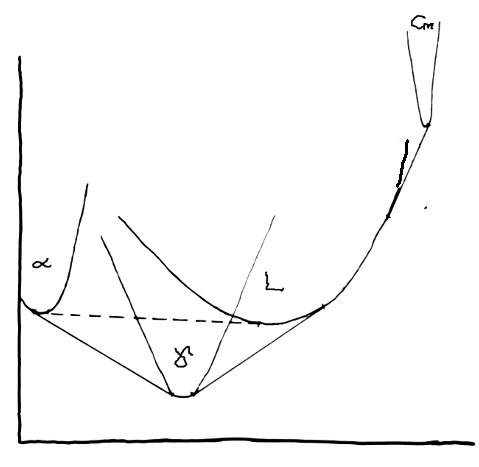by George Langford, Sc.D., Massachusetts Institute of Technology, Cambridge, MA, 1966
Copyrightę2015 by George Langford
Low Alloy Steels - Lesson 1 - Thought Experiment
See Answer at the Bottom of This Page
| Metastable Iron-Carbon Phase Diagram |
Discussion and Preparatory Explanation |
 |
In
the early 1970's I was doing an experiment at Monsanto's Research Park
Development Center with the casting of steel wire directly from the
melt using their technology, which was based on the addition of small
amounts of silicon to the liquid steel and on the selective reaction of
that silicon with carbon monoxide to form a silica envelope around the
liquid stream to stabilize it against breakup into droplets by
surface-tension effects. I was trying to speed up the solidification process in an effort to avoid shrinkage porosity, which was the bugaboo of Monsanto's wire-casting efforts. I added forced cooling with helium using a helical pattern of gas jets directed crosswise to the liquid stream. The stream could be seen to follow a wavy pattern, but it would tolerate pretty high velocities of the helium without getting disrupted. As the helium flow rate was increased, the recalescence point in the stream rose higher and higher until it reached a critical point, then suddenly dropped down significantly, and became both extremely steady (not diffuse as before that point) and quite pronounced, from below red heat to white hot. The resulting wire was mostly light tan in color, but had occasional lengths of a blue color. |

